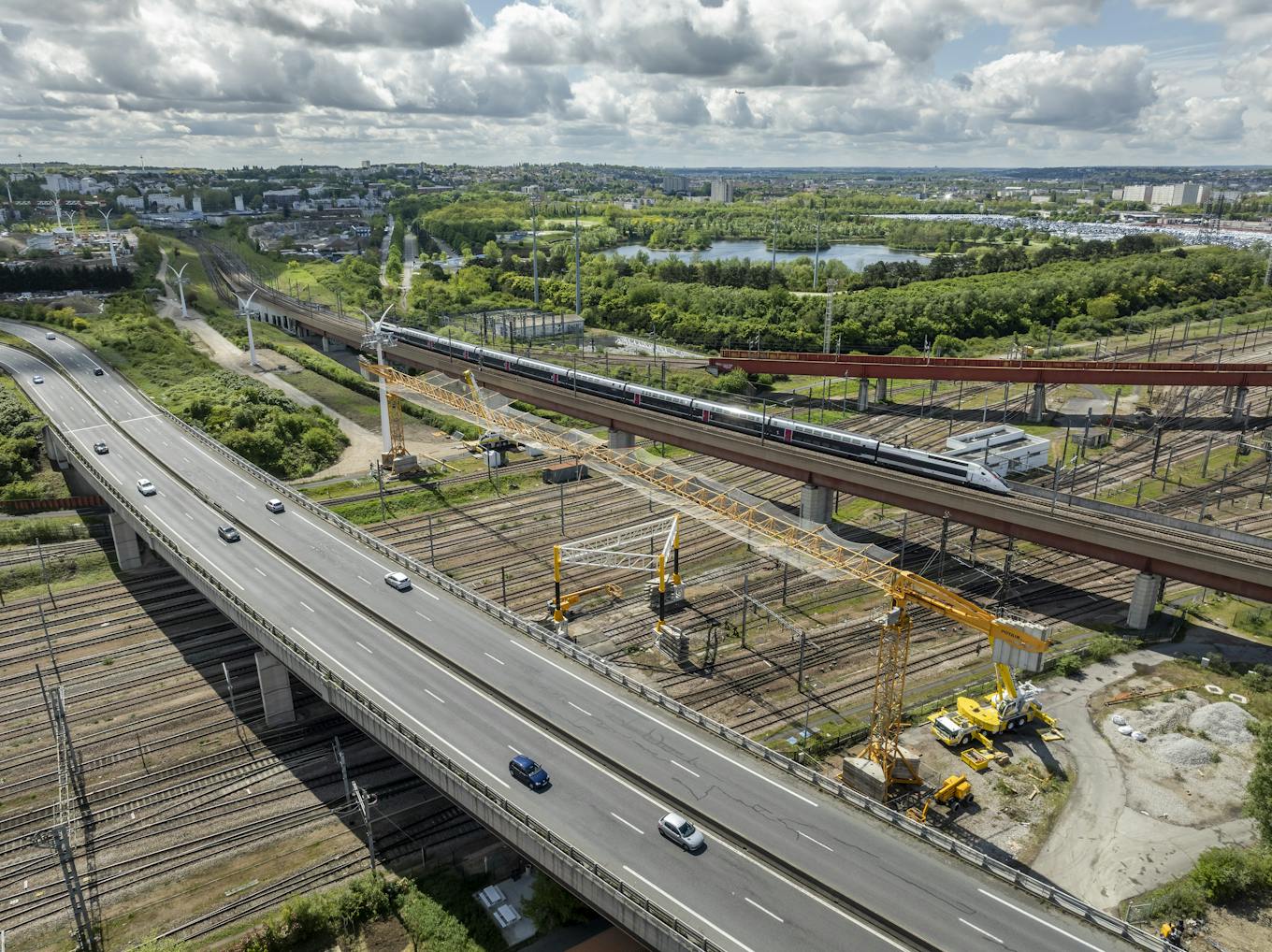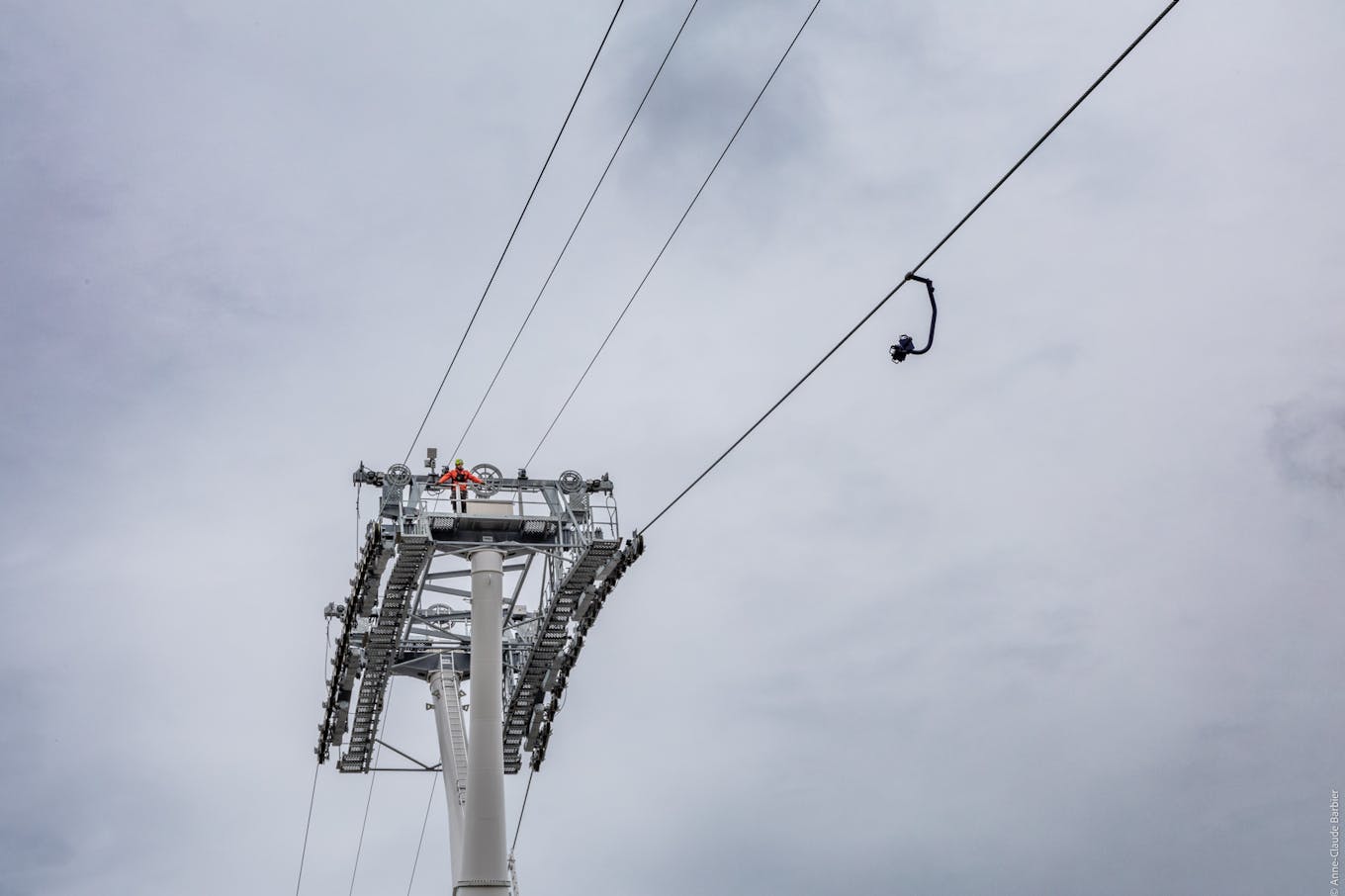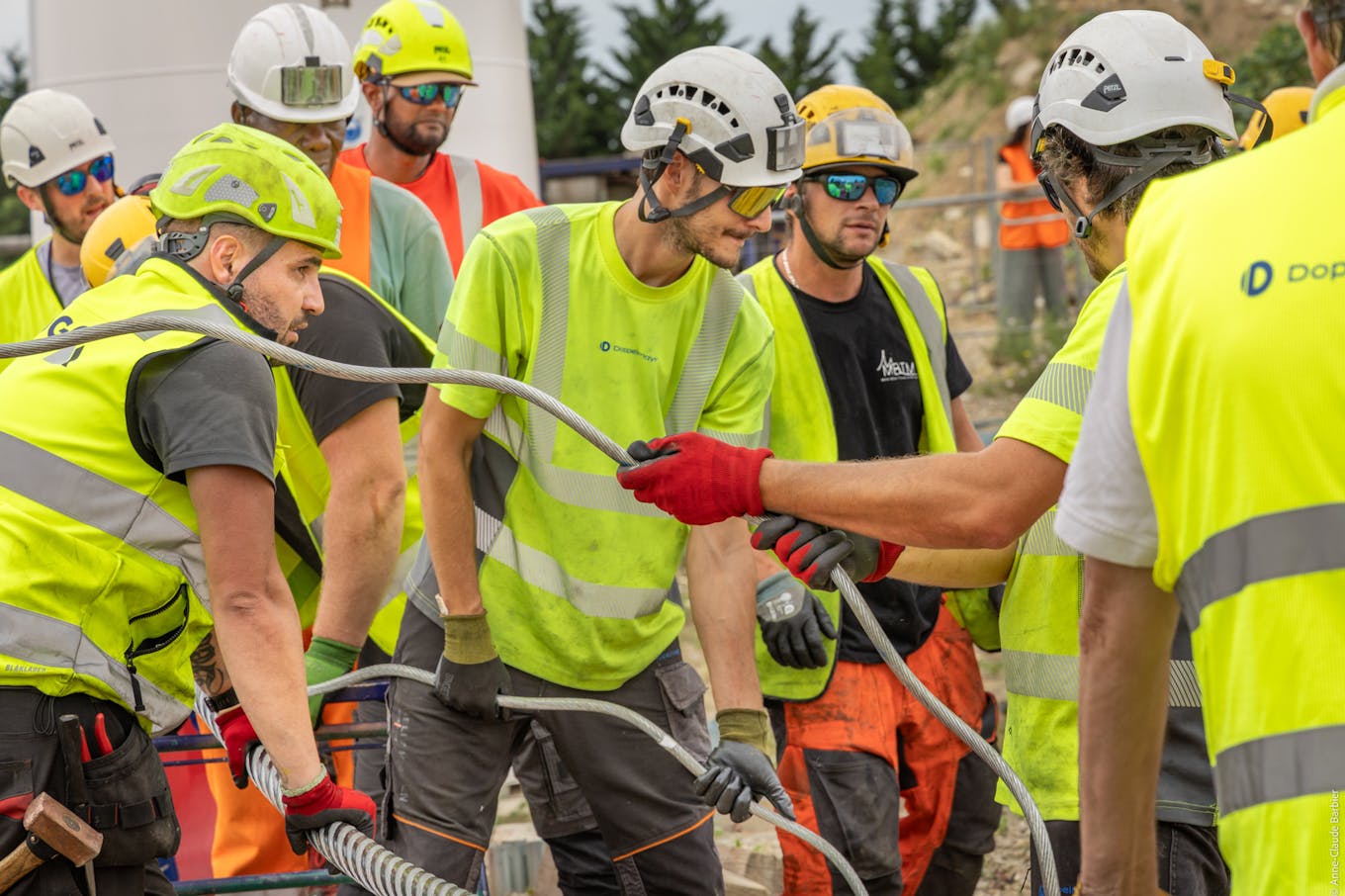The first loop of the cable is ready to accommodate the cabins, between the Pointe du Lac and Limeil-Brévannes stations
Published on
While almost all the pylons have now been installed, the first metres of the cable that will equip the 1st cable car in the Ile-de-France region have been placed on the section linking the Pointe du Lac and Limeil-Brévannes stations.
Low-noise cable
The cable that will equip the C1 Cable line will support the 105 cabins that will carry 11,000 passengers per day when it is commissioned. Île-de-France Mobilités, the project owner, has selected a high-end new-generation cable for the first urban cable car in the Île-de-France region, both to guarantee the safety of users, the hearing comfort of local residents, the durability of the cable and the robustness of the cable car.
This innovative cable is made of metal wires ("strands") interwoven with black synthetic profiles. This design smooths the cable, drastically reducing vibrations and noise emitted by the passage of the cabins, but also making it more robust.

3 Steps to Install the Cable
The installation of the tractor-carrier cable of your cable car is carried out in 3 main stages in three sectors:
1/ Protection of the area
2/ Unwinding the cable
3/ marriage of the cable loop or "splice".
Feedback on the installation of the cable between the Pointe du Lac and Limeil Brévannes stations:
First step: preparing the unwinding area of the cable
Once the stations have been built and the pylons have been raised, the first step is to secure the area overflown by the future cables, and in particular the roads and railways. The aim is to allow the cable to be unwound in complete safety, while maintaining the conditions for train and car traffic.
For the first section, one of the challenges was to fly over the tracks of the Valenton marshalling yard, which is more than 110m wide. The teams installed "cable grommets" on each side of the infrastructure, a type of crane with protective nets over these railway tracks.
Two cranes have been erected on either side of the railway infrastructure, located between the viaducts of the High-Speed Line and the RN406. This imposing structure, positioned to the nearest millimetre, required years of study and dialogue and mobilised many specialised teams.
The installation of this protection above the railway beam, specially designed for this site, was carried out in collaboration with the SNCF and required an interruption of freight train traffic during the last weekend of April: an appointment made several years earlier and kept.

Second step: unwinding the cable
Due to its weight (10kg/metre), the operation consists of successively unwinding cables of increasingly large diameter until the final cable. The first two thin and light Kevlar cables, called "halyards", are first installed by hand on the outriggers at the top of the pylons.
This cable was unwound to gradually drive several cables of increasing diameter, until the final cable. During this unwinding, the tension of the cable is controlled using several devices.

Step Three: Cable Splicing or "Marriage"
With the final cable in place at the pylons, the loop is closed and the two ends of the cable are reunited. This is what is called "splicing", an entirely manual operation that requires great technicality, precision and rigor and more than twenty people mobilized. Everything is measured and checked before the cable is re-tensioned and repositioned at the pylons.

The technical sheet of cable unwinding on this first section
• 1 carrier-tractor cable 5 cm in diameter and weighing about 10kg/m, i.e. 33T on the entire cable
• 3600 meters of cables installed between Pointe du Lac and Limeil-Brévannes
• 2 intermediate cables, 2 of which are Kevlar
• 10 workers mobilized for unwinding the cable + 20 for splicing
